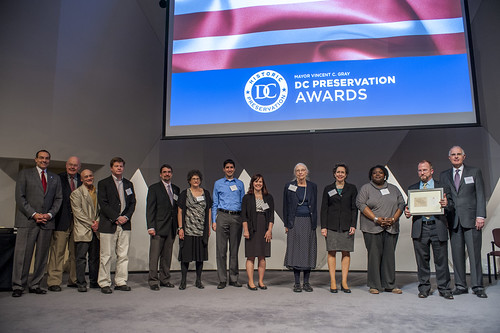Apparently DC was awash in urine before 2006. In a discussion today of what the DC Public Library system
was like before the arrival of outgoing Chief Library Ginnie Cooper, the Post hauled out the gentrification talking point of the year: the past was full of urine and urine smells, the new gentrified future will be clean and fresh-smelling:
Why does the press smell urine when it talks about DC's past? What does urine mean in these accounts? Here are some thoughts:
Cooper spent the past seven years "mucking out the libraries of the nation’s capital." The urine theme appeared again a while back in the Washington City Paper in an article praising the new, upscale Hawk and Dove: "The original place was dark and rotting, the smell of urine persistent and legendary." Generally, the press presents DC of the past as a place of ruin, mold, rot, chaos, and -- bizarrely -- urine. Those living here before 2006 or maybe even before 2013, they seem to suggest, were poor guardians of the city and our only hope comes from whom?Whoever said “without libraries, you have no civilization” had obviously never confronted a D.C. public library circa the early 2000s. Odd-smelling places, many of them, and not in a musty literary way but in a stinky dog pee way, with curling carpet and yellowy leaking ceilings, and the sense that whatever book you sought might be on the shelves, or might be propping up a window air-conditioning unit. Walking into a branch felt less like entering a monument to knowledge than like entering a semifinished basement in need of a good wet vac.
Why does the press smell urine when it talks about DC's past? What does urine mean in these accounts? Here are some thoughts:
- Anthropologist Mary Douglas famously argued that dirt was "matter out of place"; when one talks about dirt or, in this case, urine and muck, one is actually arguing that the social order has been disrupted and must be reestablished. The perception of urine smells reflects a desire to 'purify' the city and reestablish a much older order, such as of the segregated 1890s 'disrupted' by civil rights, and/or create a new gentrified order. The Washington City Paper wrote in an article about the new Canal Park: "The skaters in Canal Park are simultaneously bringing back the area's distant past -- people are thought to have skated on the canal that ran through the area in the 19th century -- and helping it shake off its recent history." What recent history do they want to "shake off"? The Post's suggestion that DC lacked "civilization" before 2006 also supports this interpretation of the function of urine as a justification of gentrification.
- Where are all the DC Public Library staff in this story who worked for decades in the libraries, the staff who probably developed the vision that Cooper realized and worked with her to implement it?
- Why does the Post specify that the urine smell comes from dogs? Interestingly, dogs and dogs parks are often seen as signs of gentrification. Gentrifiers, in fact, may use their dogs to establish their separation from others. According to University of Paris sociology professor Sylvie Tissot, "gentrifiers actively use public spaces, such as dog runs, to create social boundaries, to exclude others as well as to define insiders. Spatial boundaries allow them to distinguish themselves from the poor ethnic minorities, and 'deviant' populations..." Was it the gentrifiers who brought the dog urine into the District?
- In the past, did dogs get into the library and urinate everywhere? Or were the past users of the libraries supposed to be like untrained dogs?
- Maybe the press is obsessed with urine smells because it has renifleurism, a disorder involving "sexual arousal by odor; arousal by the smell of urine"? They are horrified by urine but somehow are drawn to it?
- What is the smell of gentrification? Is it the smell of victory?





